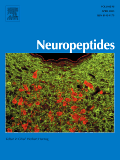“Agents acting via cannabinoid receptors have been widely developed; starting from the chemical structure of phytocannabinoids isolated from cannabis sativa plant, specific and selective compounds of these receptors have been produced ranging from partial to full agonists and /or antagonists endowed with different potency.
The enhanced interest on developing such classes of drugs is due to the beneficial properties widely reported by both anecdotal reports and scientific studies describing the potential medicinal use of cannabinoids and their derivatives in numerous pathological conditions in both in vitro and in vivo models.
The use of these drugs has been found to be of benefit in a wide number of neurological and neuropsychiatric disorders, and in many other diseases ranging from cancer, atherosclerosis, stroke, hypertension, inflammatory related disorders, and autoimmune diseases, just to mention some.
In particular, being the cannabinoid CB1 receptor a central receptor expressed by neurons of the central nervous system, the attention for the treatment of neurological diseases has been mainly focused on compounds acting via this receptor, however some of these compounds has been showed to act by alternative pathways in some cases unrelated to CB1 receptors.
Nonetheless, endocannabinoids are potent regulators of the synaptic function in the central nervous system and their levels are modulated in neurological diseases.
In this study, we focused on endocannabinoid mechanism of action in neuronal signaling and on cannabimimetic drug potential application in neurological disorders.
Finally, novel patents on cannabis-based drugs with applicability in central nervous system disorders are highlighted, to suggest future potential therapeutic utility of derivatives of this ancient plant.”
http://www.ncbi.nlm.nih.gov/pubmed/27334611







